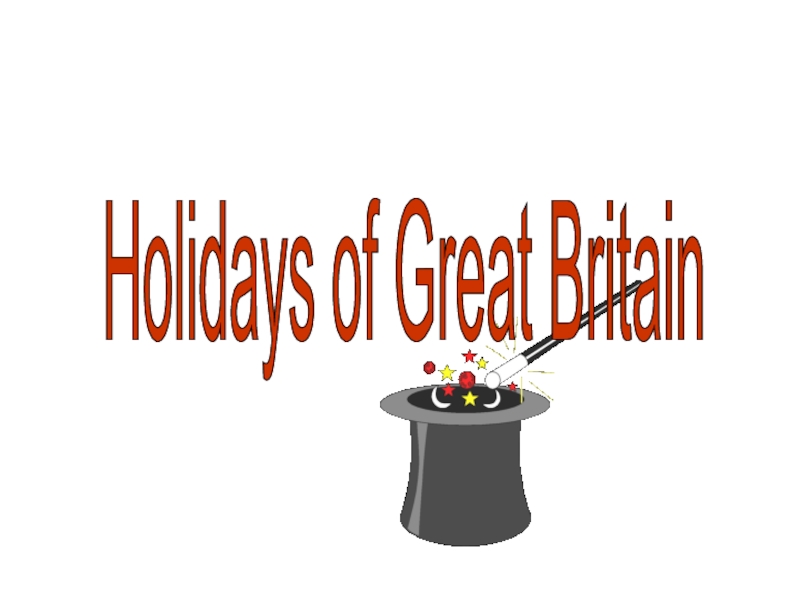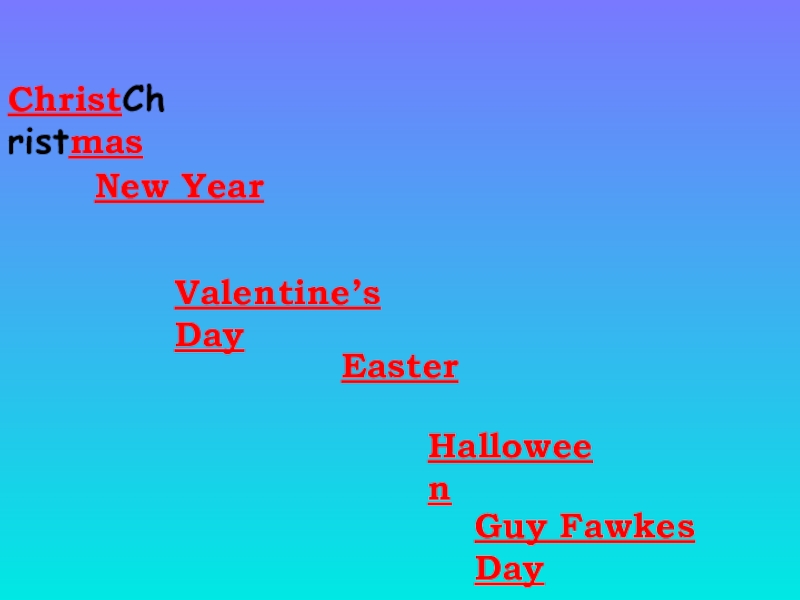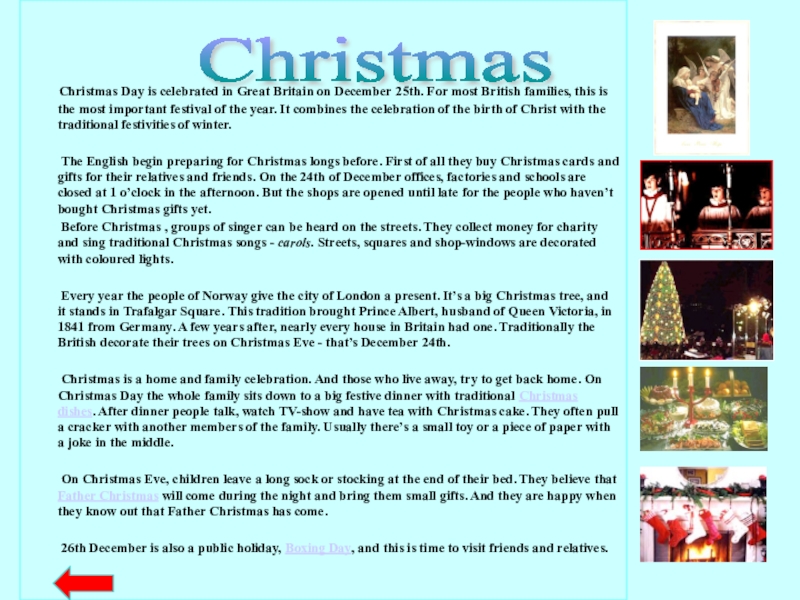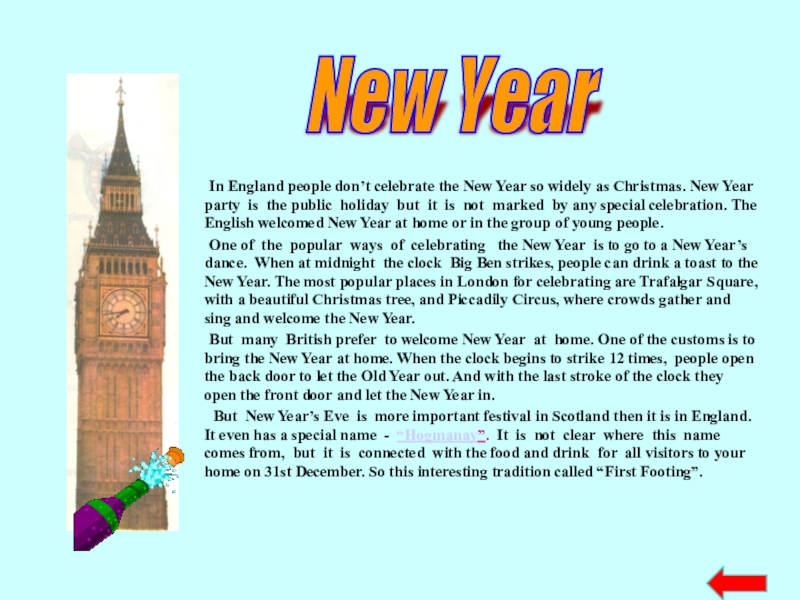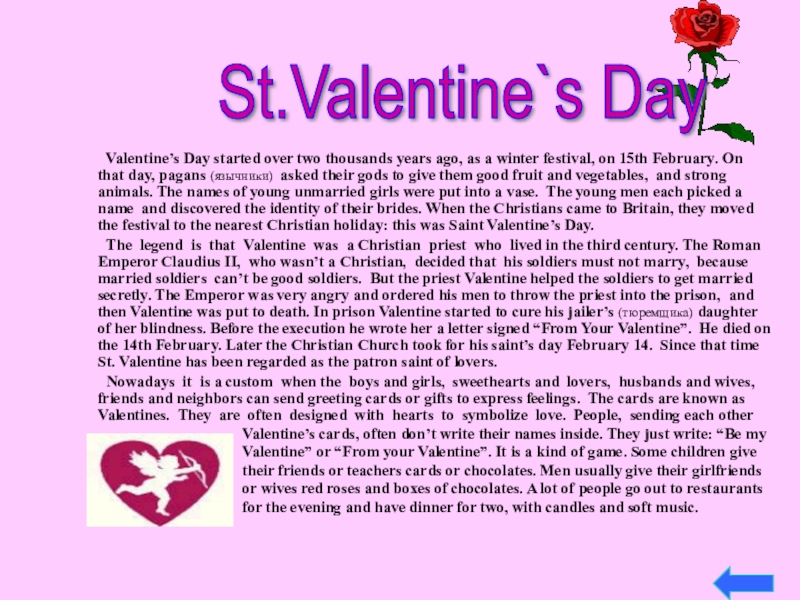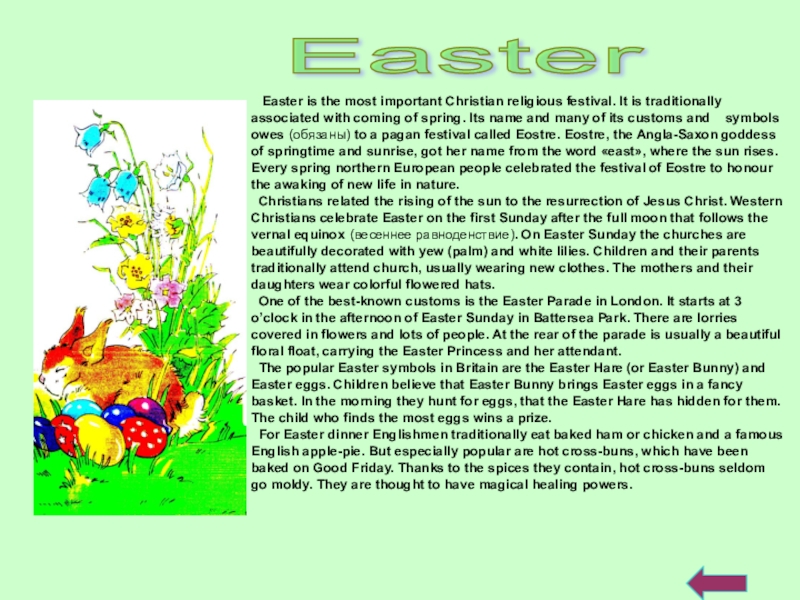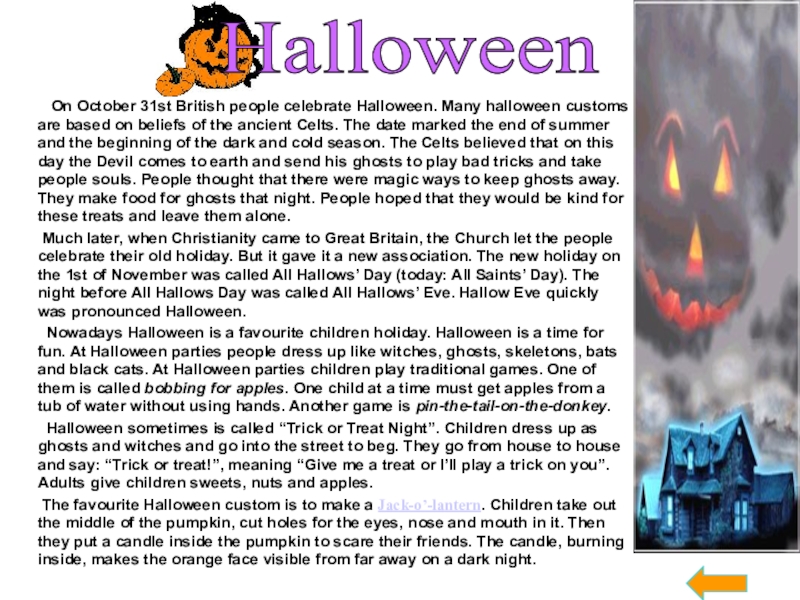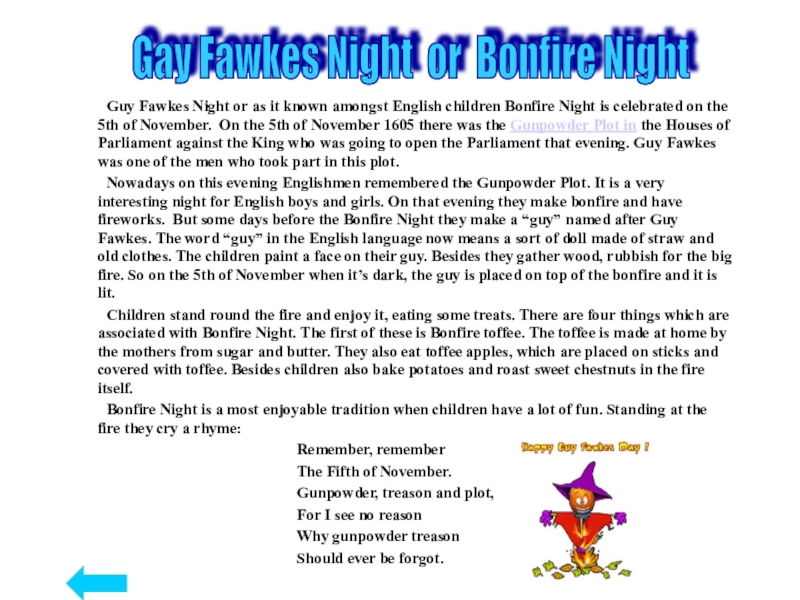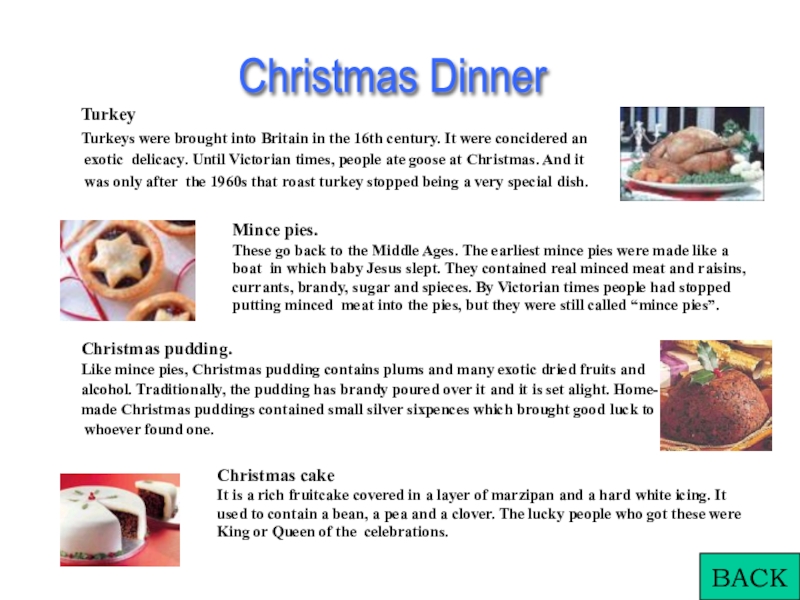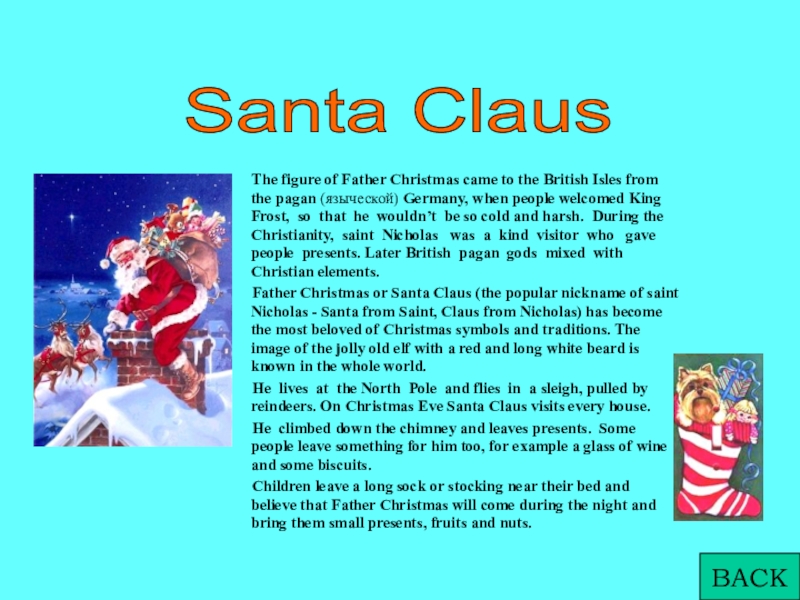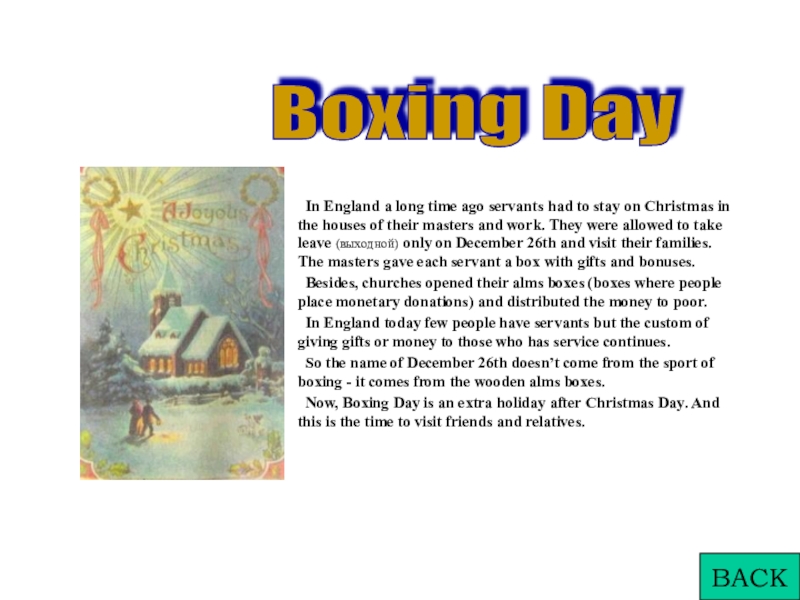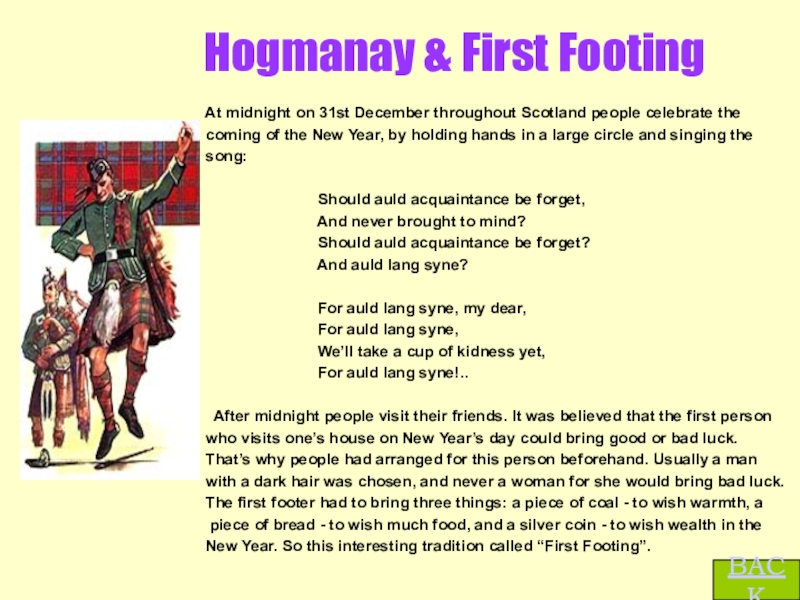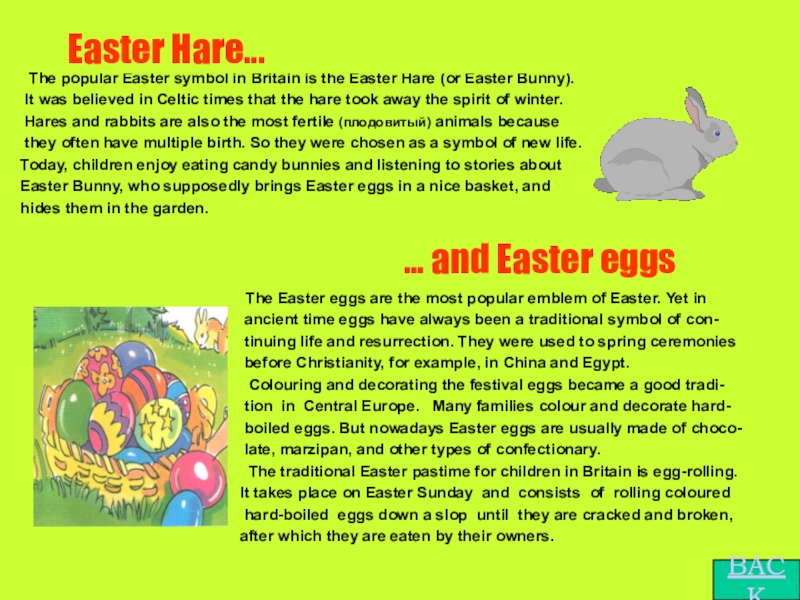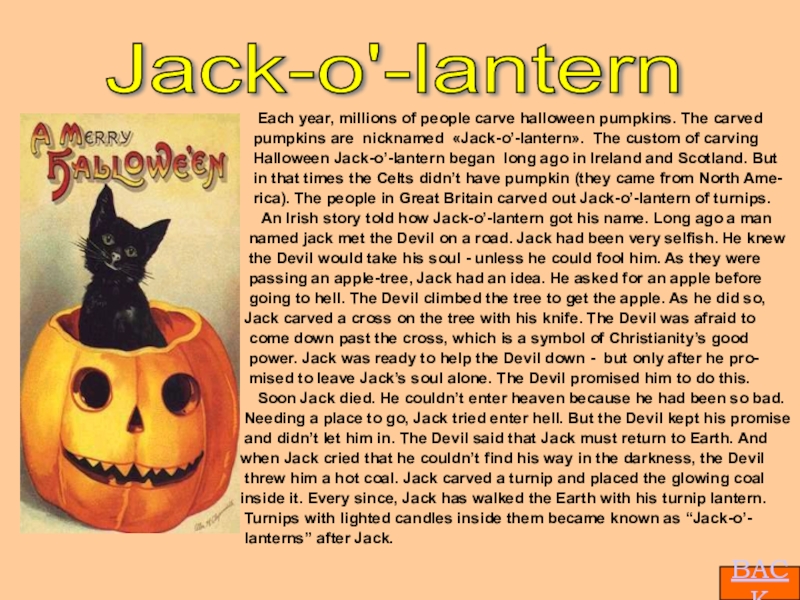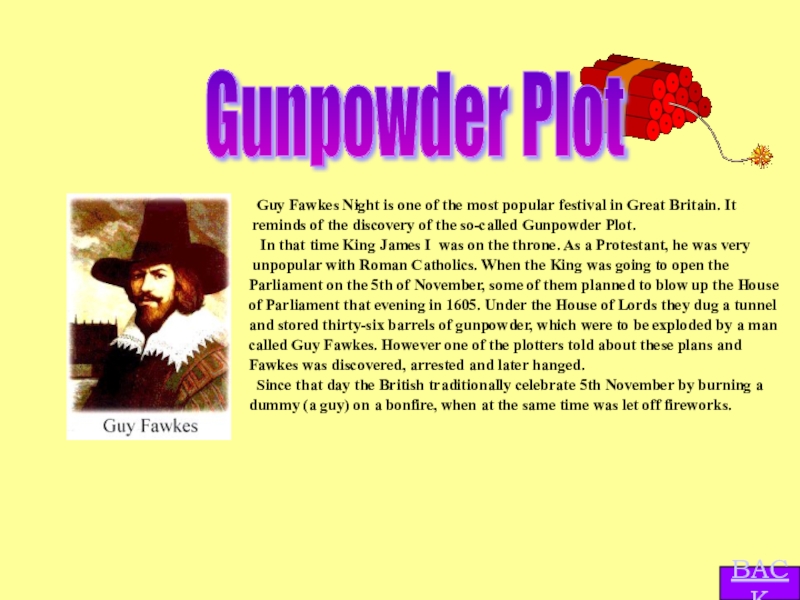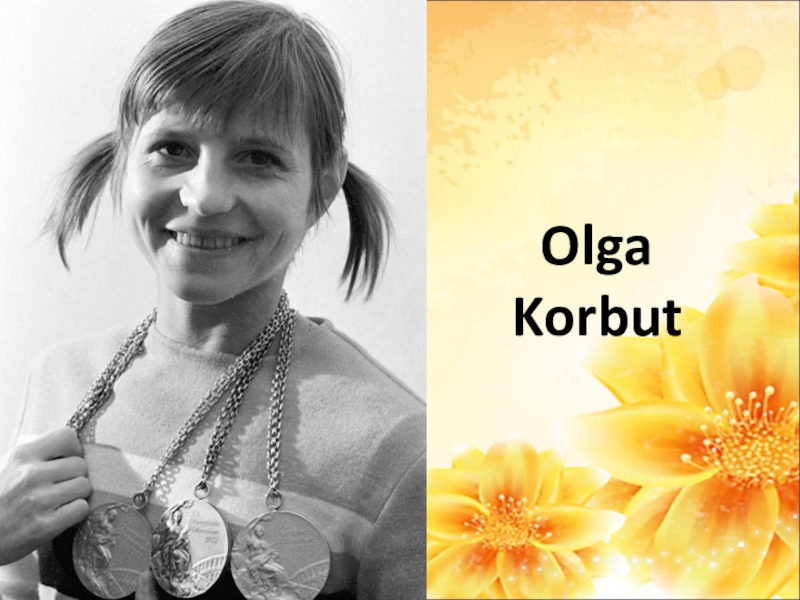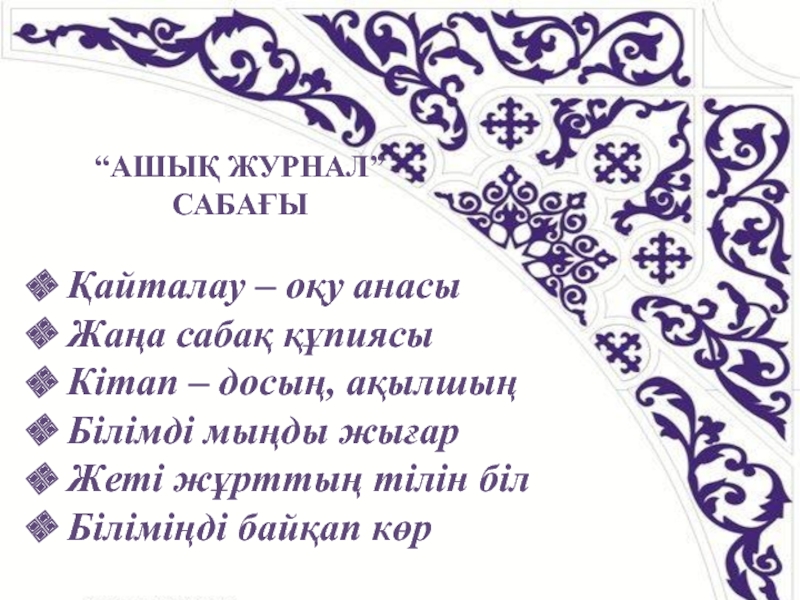- Главная
- Разное
- Образование
- Спорт
- Естествознание
- Природоведение
- Религиоведение
- Французский язык
- Черчение
- Английский язык
- Астрономия
- Алгебра
- Биология
- География
- Геометрия
- Детские презентации
- Информатика
- История
- Литература
- Математика
- Музыка
- МХК
- Немецкий язык
- ОБЖ
- Обществознание
- Окружающий мир
- Педагогика
- Русский язык
- Технология
- Физика
- Философия
- Химия
- Шаблоны, фоны, картинки для презентаций
- Экология
- Экономика
Презентация, доклад Праздники Британии (8 класс)
Содержание
- 1. Презентация Праздники Британии (8 класс)
- 2. Holidays of Great Britain
- 3. HalloweenChristChristmasEasterNew YearGuy Fawkes DayValentine’s Day
- 4. Слайд 4
- 5. New Year In
- 6. Valentine’s Day
- 7. Слайд 7
- 8. On October
- 9. Guy Fawkes
- 10. Christmas Dinner TurkeyTurkeys were brought into Britain
- 11. Santa Claus The
- 12. In England a long time ago
- 13. Hogmanay &
- 14. The popular Easter symbol
- 15. Слайд 15
- 16. Слайд 16
Слайд 4
The English begin preparing for Christmas longs before. First of all they buy Christmas cards and gifts for their relatives and friends. On the 24th of December offices, factories and schools are closed at 1 o’clock in the afternoon. But the shops are opened until late for the people who haven’t bought Christmas gifts yet.
Before Christmas , groups of singer can be heard on the streets. They collect money for charity and sing traditional Christmas songs - carols. Streets, squares and shop-windows are decorated with coloured lights.
Every year the people of Norway give the city of London a present. It’s a big Christmas tree, and it stands in Trafalgar Square. This tradition brought Prince Albert, husband of Queen Victoria, in 1841 from Germany. A few years after, nearly every house in Britain had one. Traditionally the British decorate their trees on Christmas Eve - that’s December 24th.
Christmas is a home and family celebration. And those who live away, try to get back home. On Christmas Day the whole family sits down to a big festive dinner with traditional Christmas dishes. After dinner people talk, watch TV-show and have tea with Christmas cake. They often pull a cracker with another members of the family. Usually there’s a small toy or a piece of paper with a joke in the middle.
On Christmas Eve, children leave a long sock or stocking at the end of their bed. They believe that Father Christmas will come during the night and bring them small gifts. And they are happy when they know out that Father Christmas has come.
26th December is also a public holiday, Boxing Day, and this is time to visit friends and relatives.
Christmas
Слайд 5New Year
In England people don’t
One of the popular ways of celebrating the New Year is to go to a New Year’s dance. When at midnight the clock Big Ben strikes, people can drink a toast to the New Year. The most popular places in London for celebrating are Trafalgar Square, with a beautiful Christmas tree, and Piccadily Circus, where crowds gather and sing and welcome the New Year.
But many British prefer to welcome New Year at home. One of the customs is to bring the New Year at home. When the clock begins to strike 12 times, people open the back door to let the Old Year out. And with the last stroke of the clock they open the front door and let the New Year in.
But New Year’s Eve is more important festival in Scotland then it is in England. It even has a special name - “Hogmanay”. It is not clear where this name comes from, but it is connected with the food and drink for all visitors to your home on 31st December. So this interesting tradition called “First Footing”.
Слайд 6 Valentine’s Day started over two thousands
The legend is that Valentine was a Christian priest who lived in the third century. The Roman Emperor Claudius II, who wasn’t a Christian, decided that his soldiers must not marry, because married soldiers can’t be good soldiers. But the priest Valentine helped the soldiers to get married secretly. The Emperor was very angry and ordered his men to throw the priest into the prison, and then Valentine was put to death. In prison Valentine started to cure his jailer’s (тюремщика) daughter of her blindness. Before the execution he wrote her a letter signed “From Your Valentine”. He died on the 14th February. Later the Christian Church took for his saint’s day February 14. Since that time St. Valentine has been regarded as the patron saint of lovers.
Nowadays it is a custom when the boys and girls, sweethearts and lovers, husbands and wives, friends and neighbors can send greeting cards or gifts to express feelings. The cards are known as Valentines. They are often designed with hearts to symbolize love. People, sending each other
Valentine’s cards, often don’t write their names inside. They just write: “Be my
Valentine” or “From your Valentine”. It is a kind of game. Some children give
their friends or teachers cards or chocolates. Men usually give their girlfriends
or wives red roses and boxes of chocolates. A lot of people go out to restaurants
for the evening and have dinner for two, with candles and soft music.
St.Valentine`s Day
Слайд 7
Easter is the most important Christian religious festival. It is traditionally
associated with coming of spring. Its name and many of its customs and symbols
owes (обязаны) to a pagan festival called Eostre. Eostre, the Angla-Saxon goddess
of springtime and sunrise, got her name from the word «east», where the sun rises.
Every spring northern European people celebrated the festival of Eostre to honour
the awaking of new life in nature.
Christians related the rising of the sun to the resurrection of Jesus Christ. Western
Christians celebrate Easter on the first Sunday after the full moon that follows the
vernal equinox (весеннее равноденствие). On Easter Sunday the churches are
beautifully decorated with yew (palm) and white lilies. Children and their parents
traditionally attend church, usually wearing new clothes. The mothers and their
daughters wear colorful flowered hats.
One of the best-known customs is the Easter Parade in London. It starts at 3
o’clock in the afternoon of Easter Sunday in Battersea Park. There are lorries
covered in flowers and lots of people. At the rear of the parade is usually a beautiful
floral float, carrying the Easter Princess and her attendant.
The popular Easter symbols in Britain are the Easter Hare (or Easter Bunny) and
Easter eggs. Children believe that Easter Bunny brings Easter eggs in a fancy
basket. In the morning they hunt for eggs, that the Easter Hare has hidden for them.
The child who finds the most eggs wins a prize.
For Easter dinner Englishmen traditionally eat baked ham or chicken and a famous
English apple-pie. But especially popular are hot cross-buns, which have been
baked on Good Friday. Thanks to the spices they contain, hot cross-buns seldom
go moldy. They are thought to have magical healing powers.
Easter
Слайд 8 On October 31st British people celebrate
Much later, when Christianity came to Great Britain, the Church let the people celebrate their old holiday. But it gave it a new association. The new holiday on the 1st of November was called All Hallows’ Day (today: All Saints’ Day). The night before All Hallows Day was called All Hallows’ Eve. Hallow Eve quickly was pronounced Halloween.
Nowadays Halloween is a favourite children holiday. Halloween is a time for fun. At Halloween parties people dress up like witches, ghosts, skeletons, bats and black cats. At Halloween parties children play traditional games. One of them is called bobbing for apples. One child at a time must get apples from a tub of water without using hands. Another game is pin-the-tail-on-the-donkey.
Halloween sometimes is called “Trick or Treat Night”. Children dress up as ghosts and witches and go into the street to beg. They go from house to house and say: “Trick or treat!”, meaning “Give me a treat or I’ll play a trick on you”. Adults give children sweets, nuts and apples.
The favourite Halloween custom is to make a Jack-o’-lantern. Children take out the middle of the pumpkin, cut holes for the eyes, nose and mouth in it. Then they put a candle inside the pumpkin to scare their friends. The candle, burning inside, makes the orange face visible from far away on a dark night.
Halloween
Слайд 9 Guy Fawkes Night or as it
Nowadays on this evening Englishmen remembered the Gunpowder Plot. It is a very interesting night for English boys and girls. On that evening they make bonfire and have fireworks. But some days before the Bonfire Night they make a “guy” named after Guy Fawkes. The word “guy” in the English language now means a sort of doll made of straw and old clothes. The children paint a face on their guy. Besides they gather wood, rubbish for the big fire. So on the 5th of November when it’s dark, the guy is placed on top of the bonfire and it is lit.
Children stand round the fire and enjoy it, eating some treats. There are four things which are associated with Bonfire Night. The first of these is Bonfire toffee. The toffee is made at home by the mothers from sugar and butter. They also eat toffee apples, which are placed on sticks and covered with toffee. Besides children also bake potatoes and roast sweet chestnuts in the fire itself.
Bonfire Night is a most enjoyable tradition when children have a lot of fun. Standing at the fire they cry a rhyme:
Remember, remember
The Fifth of November.
Gunpowder, treason and plot,
For I see no reason
Why gunpowder treason
Should ever be forgot.
Gay Fawkes Night or Bonfire Night
Слайд 10Christmas Dinner
Turkey
Turkeys were brought into Britain in the 16th century.
exotic delicacy. Until Victorian times, people ate goose at Christmas. And it
was only after the 1960s that roast turkey stopped being a very special dish.
Mince pies.
These go back to the Middle Ages. The earliest mince pies were made like a
boat in which baby Jesus slept. They contained real minced meat and raisins,
currants, brandy, sugar and spieces. By Victorian times people had stopped
putting minced meat into the pies, but they were still called “mince pies”.
Christmas pudding.
Like mince pies, Christmas pudding contains plums and many exotic dried fruits and
alcohol. Traditionally, the pudding has brandy poured over it and it is set alight. Home-
made Christmas puddings contained small silver sixpences which brought good luck to
whoever found one.
Christmas cake
It is a rich fruitcake covered in a layer of marzipan and a hard white icing. It
used to contain a bean, a pea and a clover. The lucky people who got these were
King or Queen of the celebrations.
BACK
Слайд 11Santa Claus
The figure of Father Christmas
Father Christmas or Santa Claus (the popular nickname of saint Nicholas - Santa from Saint, Claus from Nicholas) has become the most beloved of Christmas symbols and traditions. The image of the jolly old elf with a red and long white beard is known in the whole world.
He lives at the North Pole and flies in a sleigh, pulled by reindeers. On Christmas Eve Santa Claus visits every house.
He climbed down the chimney and leaves presents. Some people leave something for him too, for example a glass of wine and some biscuits.
Children leave a long sock or stocking near their bed and believe that Father Christmas will come during the night and bring them small presents, fruits and nuts.
BACK
Слайд 12 In England a long time ago servants had to stay
Besides, churches opened their alms boxes (boxes where people place monetary donations) and distributed the money to poor.
In England today few people have servants but the custom of giving gifts or money to those who has service continues.
So the name of December 26th doesn’t come from the sport of boxing - it comes from the wooden alms boxes.
Now, Boxing Day is an extra holiday after Christmas Day. And this is the time to visit friends and relatives.
Boxing Day
BACK
Слайд 13 Hogmanay & First Footing
coming of the New Year, by holding hands in a large circle and singing the
song:
Should auld acquaintance be forget,
And never brought to mind?
Should auld acquaintance be forget?
And auld lang syne?
For auld lang syne, my dear,
For auld lang syne,
We’ll take a cup of kidness yet,
For auld lang syne!..
After midnight people visit their friends. It was believed that the first person
who visits one’s house on New Year’s day could bring good or bad luck.
That’s why people had arranged for this person beforehand. Usually a man
with a dark hair was chosen, and never a woman for she would bring bad luck.
The first footer had to bring three things: a piece of coal - to wish warmth, a
piece of bread - to wish much food, and a silver coin - to wish wealth in the
New Year. So this interesting tradition called “First Footing”.
BACK
Слайд 14
The popular Easter symbol in Britain is the
It was believed in Celtic times that the hare took away the spirit of winter.
Hares and rabbits are also the most fertile (плодовитый) animals because
they often have multiple birth. So they were chosen as a symbol of new life.
Today, children enjoy eating candy bunnies and listening to stories about
Easter Bunny, who supposedly brings Easter eggs in a nice basket, and
hides them in the garden.
… and Easter eggs
The Easter eggs are the most popular emblem of Easter. Yet in
ancient time eggs have always been a traditional symbol of con-
tinuing life and resurrection. They were used to spring ceremonies
before Christianity, for example, in China and Egypt.
Colouring and decorating the festival eggs became a good tradi-
tion in Central Europe. Many families colour and decorate hard-
boiled eggs. But nowadays Easter eggs are usually made of choco-
late, marzipan, and other types of confectionary.
The traditional Easter pastime for children in Britain is egg-rolling.
It takes place on Easter Sunday and consists of rolling coloured
hard-boiled eggs down a slop until they are cracked and broken,
after which they are eaten by their owners.
Easter Hare...
BACK
Слайд 15
Each year, millions of people carve halloween pumpkins. The carved
pumpkins are nicknamed «Jack-o’-lantern». The custom of carving
Halloween Jack-o’-lantern began long ago in Ireland and Scotland. But
in that times the Celts didn’t have pumpkin (they came from North Ame-
rica). The people in Great Britain carved out Jack-o’-lantern of turnips.
An Irish story told how Jack-o’-lantern got his name. Long ago a man
named jack met the Devil on a road. Jack had been very selfish. He knew
the Devil would take his soul - unless he could fool him. As they were
passing an apple-tree, Jack had an idea. He asked for an apple before
going to hell. The Devil climbed the tree to get the apple. As he did so,
Jack carved a cross on the tree with his knife. The Devil was afraid to
come down past the cross, which is a symbol of Christianity’s good
power. Jack was ready to help the Devil down - but only after he pro-
mised to leave Jack’s soul alone. The Devil promised him to do this.
Soon Jack died. He couldn’t enter heaven because he had been so bad.
Needing a place to go, Jack tried enter hell. But the Devil kept his promise
and didn’t let him in. The Devil said that Jack must return to Earth. And
when Jack cried that he couldn’t find his way in the darkness, the Devil
threw him a hot coal. Jack carved a turnip and placed the glowing coal
inside it. Every since, Jack has walked the Earth with his turnip lantern.
Turnips with lighted candles inside them became known as “Jack-o’-
lanterns” after Jack.
Jack-o'-lantern
BACK
Слайд 16
Guy Fawkes Night is one of the most popular festival in Great Britain. It
reminds of the discovery of the so-called Gunpowder Plot.
In that time King James I was on the throne. As a Protestant, he was very
unpopular with Roman Catholics. When the King was going to open the
Parliament on the 5th of November, some of them planned to blow up the House
of Parliament that evening in 1605. Under the House of Lords they dug a tunnel
and stored thirty-six barrels of gunpowder, which were to be exploded by a man
called Guy Fawkes. However one of the plotters told about these plans and
Fawkes was discovered, arrested and later hanged.
Since that day the British traditionally celebrate 5th November by burning a
dummy (a guy) on a bonfire, when at the same time was let off fireworks.
Gunpowder Plot
BACK

